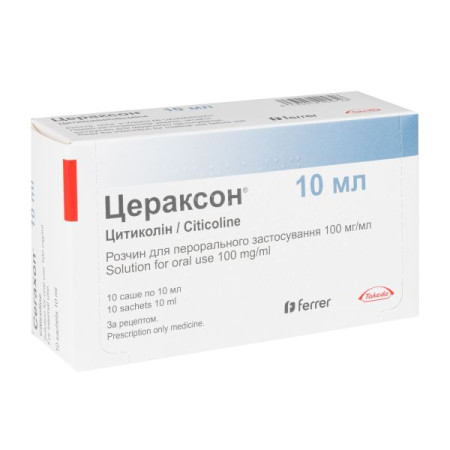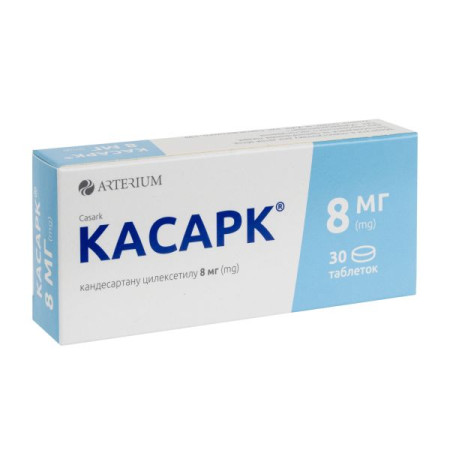Driptan tablets 5 mg No. 30

Instructions for Driptan tablets 5 mg No. 30
Warehouse
active ingredient: oxybutynin hydrochloride;
1 tablet contains oxybutynin hydrochloride 5 mg;
excipients: microcrystalline cellulose, calcium stearate, anhydrous lactose.
Dosage form
Pills.
Main physicochemical properties: round white biconvex divisible tablets with a notch on one side.
Pharmacotherapeutic group
Drugs used in urology. Antispasmodics acting on the urinary tract. ATX code G04B D04.
Pharmacological properties
Pharmacodynamics
Oxybutynin has a direct antispasmodic effect on the smooth muscle fibers of the detrusor, as well as an anticholinergic effect, blocking the effect of acetylcholine on M-cholinoreceptors of smooth muscles. These properties cause relaxation of the bladder detrusor. In patients with unstable bladder Driptan® increases the volume of the bladder and reduces the frequency of spontaneous detrusor contractions.
Pharmacokinetics
According to pharmacokinetic reports, after oral administration, oxybutynin is rapidly absorbed from the gastrointestinal tract, with peak plasma concentrations occurring in less than 1 hour and then declining biexponentially with a half-life of 2 to 3 hours. The maximum effect is observed within 3-4 hours, with residual effects occurring after 10 hours.
Steady-state concentrations are reached after 8 days of oral administration. In elderly patients who lead an active lifestyle, oxybutynin does not show the ability to accumulate and its pharmacokinetics do not differ from those in other adult patients. However, in debilitated elderly patients, the values of Cmax and AUC increase significantly. Oxybutynin is extensively metabolized in the liver, primarily by cytochrome P450 enzymes, in particular CYP 3A4, which is found mainly in the liver and intestinal walls; its metabolites also have M-cholinoblocking effects. The main route of excretion is the kidneys; only 0.3-0.4% of the unchanged active substance is found in the urine of rats after 24 hours and 1% in the urine of dogs after 48 hours. Thus, in rats and dogs, oxybutynin is almost completely metabolized.
Indication
Urinary incontinence, urgency or frequency of urination in cases of bladder instability due to neurogenic bladder dysfunction (detrusor hyperreflexia) as seen in diseases such as multiple sclerosis and spina bifida, or due to idiopathic detrusor instability (motor urge incontinence). Also used to control overactive bladder following bladder or prostate surgery or associated cystitis.
Use in children
Oxybutynin hydrochloride is indicated for use in children for:
Urinary incontinence, urgency or frequency of urination in case of bladder instability due to idiopathic overactive bladder or neurogenic bladder dysfunction (detrusor overactivity); nocturnal enuresis associated with detrusor overactivity, in combination with non-drug treatment, in case of ineffectiveness of other therapy.
Contraindication
Hypersensitivity to the active substance or to any of the other components of the drug;
myasthenia gravis;
narrow-angle glaucoma or shallow anterior chamber of the eye;
patients with fever or in conditions of elevated ambient temperature, due to the risk of provoking hyperpyrexia;
children under 5 years old;
esophageal dysfunction, including hiatal hernia;
functional or organic gastrointestinal obstruction, including pyloric stenosis, paralytic ileus, intestinal atony;
patients with ileostomy, colostomy, toxic megacolon; severe ulcerative colitis;
patients with urinary tract obstruction where urinary retention may be exacerbated, such as with prostatic hypertrophy.
Interaction with other medicinal products and other types of interactions
When used simultaneously with lisuride, there is a risk of impaired consciousness, therefore regular clinical monitoring of patients is necessary.
Driptan® should be used with caution with other anticholinergic agents due to the possibility of potentiation of the anticholinergic effect.
There have been isolated reports of interactions between anticholinergics and phenothiazines, amantidine, neuroleptics (e.g. phenothiazines, butyrophenones, clozapine), other anticholinergic antiparkinsonian agents (e.g. biperiden, levodopa), antihistamines, quinidine, digitalis preparations, tricyclic antidepressants, atropine and related compounds such as atropine antispasmodics, and dipyridamole. Caution should be exercised when oxybutynin is used concomitantly with these medicinal products.
Oxybutynin is metabolized by the cytochrome P450 isoenzyme CYP3A4. Concomitant administration with a CYP3A4 inhibitor may inhibit the metabolism of oxybutynin and increase its exposure. Oxybutynin may antagonize prokinetics.
Concomitant use with cholinesterase inhibitors may lead to a decrease in their effectiveness.
Patients should be advised that alcohol may increase drowsiness caused by anticholinergic agents such as oxybutynin.
Application features
The drug should be used with caution in elderly patients who may be more sensitive to the effects of oxybutynin and may require a dose reduction (see "Method of administration and dosage"). The drug should also be used with caution in patients with autonomic neuropathy, gastrointestinal diseases, including severe gastrointestinal motility disorders, patients with hepatic or renal insufficiency, or cerebrovascular insufficiency.
Anticholinergics should be used with caution in elderly patients due to the risk of cognitive impairment.
After taking Driptan®, clinical manifestations of hyperthyroidism, coronary heart disease, chronic heart failure, arterial hypertension, prostatic hyperplasia, cardiac arrhythmias, and tachycardia may worsen.
Anticholinergic CNS effects (e.g. hallucinations, restlessness, confusion, somnolence) have been reported. Observation is recommended, especially during the first few months after initiation of therapy or dose increase. If anticholinergic CNS effects develop, discontinuation of treatment or dose reduction should be considered (see Interactions with other medicinal products and other forms of interaction).
Since oxybutynin may cause angle-closure glaucoma, patients should be advised to seek immediate medical attention if they experience sudden loss of visual acuity or eye pain.
Oxybutynin is not considered safe for patients with porphyria because it has shown porphyrinogenicity in animal and in vitro studies.
Long-term use of Driptan® may lead to the development of dental caries due to a decrease or cessation of salivation. In this regard, regular dental check-ups are recommended during long-term use of the drug.
Anticholinergic drugs should be used with caution in patients who are concomitantly taking drugs (e.g. bisphosphonates) that may cause or exacerbate esophagitis.
In case of urinary tract infection, antibacterial therapy should be prescribed.
Patients with rare hereditary forms of galactose intolerance, the Lapp lactase deficiency or glucose-galactose malabsorption should not take Driptan® due to the lactose content.
Use during pregnancy or breastfeeding
The safety of oxybutynin during pregnancy has not been established. Animal studies have shown reproductive toxicity at maternally toxic doses. Animal studies are insufficient to evaluate effects on pregnancy, embryonal/fetal development, parturition, or postnatal development. Therefore, oxybutynin should be avoided during pregnancy unless there are no safer alternatives.
In animals, oxybutynin passes into breast milk, so Driptan® should not be administered to women during breastfeeding.
Ability to influence reaction speed when driving vehicles or other mechanisms
The drug may cause decreased visual acuity or drowsiness. Patients should not drive or operate machinery unless it has been determined that the drug does not impair the patient's ability to perform physical or mental tasks.
Method of administration and doses
The drug is to be administered orally. The tablet can be divided into two equal doses.
Adults
The usual dose is 5 mg 2-3 times a day. The dose may be increased to a maximum of 5 mg 4 times a day to achieve clinical benefit, provided that side effects are tolerated.
Elderly patients
In elderly patients, the half-life of the drug is increased, therefore, a dose of 2.5 mg 2 times a day is recommended, especially for debilitated patients. The dose can be increased to 5 mg 2 times a day to obtain a clinical effect, provided that side effects are well tolerated.
Children from 5 years old
Neurogenic bladder instability, nocturnal enuresis: the usual dose is 2.5 mg 2 times a day. The dose may be increased to 5 mg 2-3 times a day to obtain a clinical effect, provided that side effects are well tolerated. In nocturnal enuresis, the last dose should be taken at bedtime.
Children.
The drug is contraindicated in children under 5 years of age. There are limited data on the use of oxybutynin in children with monosymptomatic nocturnal enuresis (not associated with detrusor overactivity). The drug should be used with caution in children over 5 years of age, as they may be more sensitive to the effects of oxybutynin, in particular with regard to the manifestation of adverse reactions from the central nervous system and psyche.
Overdose
Symptoms. Symptoms of an overdose of Driptan® develop in order from increased common side effects from the central nervous system (from restlessness and agitation to psychotic behavior) to circulatory disorders (hot flashes, decreased blood pressure, circulatory failure, etc.), respiratory failure, paralysis and coma.
Treatment.
In case of overdose, mainly symptomatic treatment should be used:
– immediate gastric lavage;
– in case of severe anticholinergic syndrome that is life-threatening, neostigmine (or physostigmine) can be used in the dosage recommended in the instructions for medical use of these drugs;
– treatment of fever.
For severe anxiety or agitation, administer diazepam intravenously at a dose of 10 mg.
For tachycardia, administer propranolol intravenously.
In case of urinary retention, bladder catheterization is indicated.
In case of respiratory muscle paralysis, perform artificial ventilation of the lungs.
Adverse reactions
The adverse reactions listed below are classified by system organ class (MedDRA) and by frequency: very common (≥1/10), common (≥1/100, <1/10), uncommon (≥1/1000, <1/100), not known (frequency cannot be estimated from the available data).
Infections and infestations
Unknown – urinary tract infection.
Gastrointestinal tract
Very common: constipation, nausea, dry mouth; common: diarrhea, vomiting; uncommon: abdominal discomfort, anorexia, decreased appetite, dysphagia; not known: gastroesophageal reflux, pseudo-obstruction in patients with risk factors (elderly or patients with constipation who are taking other drugs that reduce intestinal motility).
From the psyche
Common: confusion; not known: agitation, anxiety, hallucinations, nightmares, paranoia, cognitive impairment in elderly patients, depressive symptoms, dependence (in patients with a history of dependence on drugs and other addictive substances), disorientation, delirium.
Central nervous system
Very common: dizziness, headache, drowsiness; unknown: impaired cognitive function, convulsions.
From the heart
Unknown – tachycardia, cardiac arrhythmia.
Injuries, poisonings and procedural complications
Unknown – heat stroke.
From the side of the eyes
Common: conjunctival dryness; unknown: angle-closure glaucoma, mydriasis, increased intraocular pressure, blurred vision.
Renal and urinary tract disorders
Common: urinary retention; unknown: dysuria.
From the vascular side
Often – hot flashes (more pronounced in children than in adults).
Skin and subcutaneous tissue disorders
Very common: dry skin; not known: angioedema, skin rash, urticaria, hypohidrosis, photosensitivity.
On the part of the immune system
Not known – hypersensitivity.
Expiration date
3 years.
Do not use the drug after the expiration date indicated on the package.
Storage conditions
Store out of the reach of children at a temperature not exceeding 30 °C.
Packaging
30 tablets in a blister, 1 blister in a cardboard box.
Vacation category
According to the recipe.
Producer
Recipharm Fontaine, France.
Location of the manufacturer and address of its place of business
Rue des Pres Potets, 21121 Fontaine les Dijon, France.
You can report an adverse event when using the drug or a complaint about the quality of the drug by calling +380 44 498 6080 (24 hours a day).
There are no reviews for this product.
There are no reviews for this product, be the first to leave your review.
No questions about this product, be the first and ask your question.








